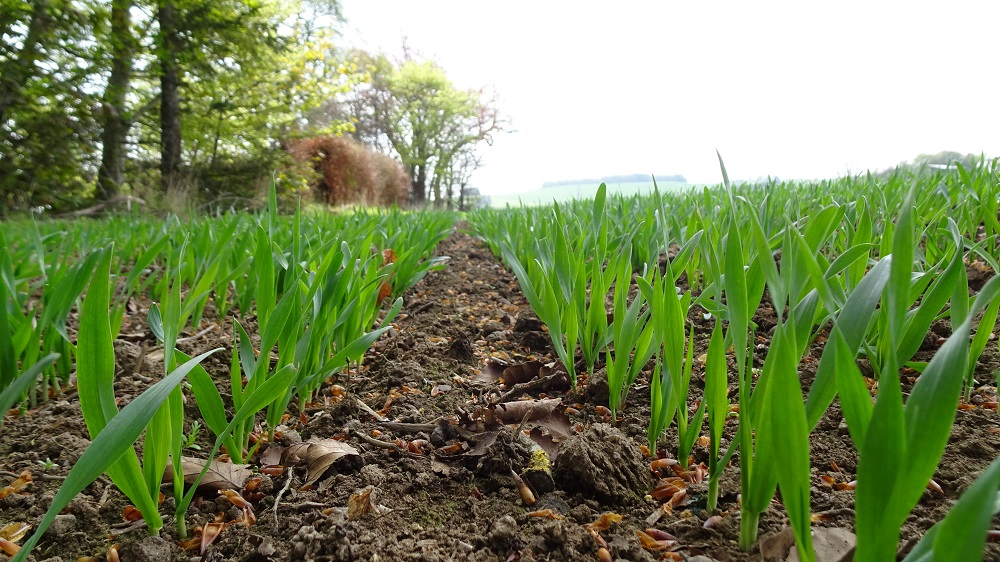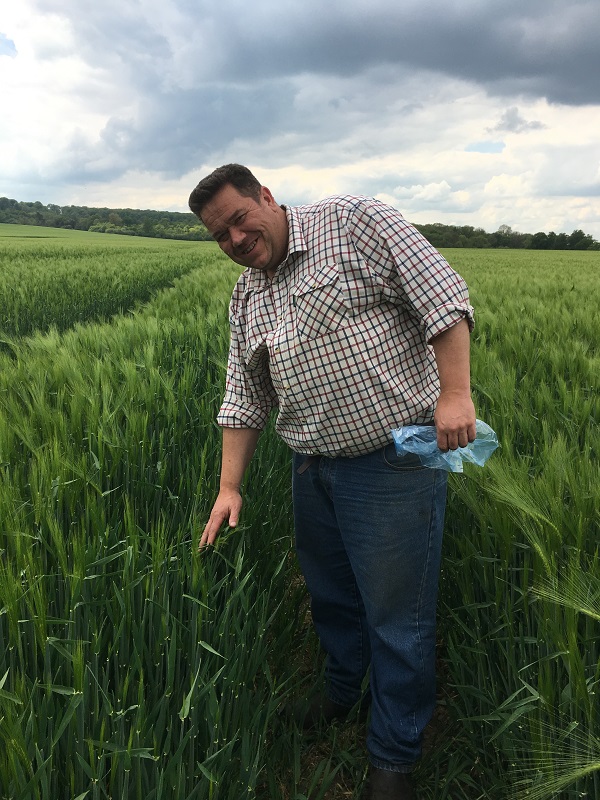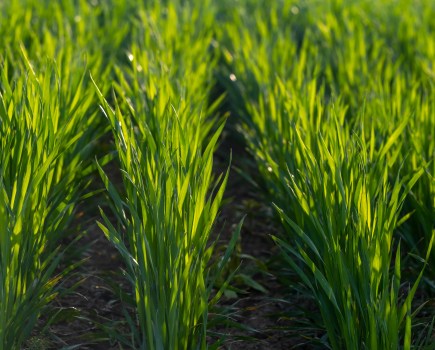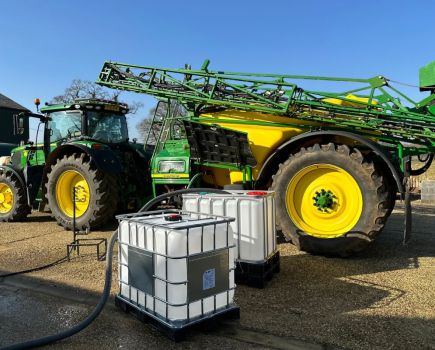
After an unprecedented and exceptionally wet start, farmers lucky enough to have winter crops in the ground will most likely need to take remedial action to improve plant health as we move into spring.
Winter-sown crops planted last autumn have been sat in wet waterlogged soils for months, and many have lazy root structures and low tiller numbers. As a result, they will most likely be in need of a boost when soils dry out, explains Stuart Sutherland, technical manager at Interagro.
“For established crops, attention to crop nutrition will also be more important than in most other years. Relatively warm, wet soils over the winter has seen soil nitrogen mineralise and leach, and coupled with later drilling dates, this will have put autumn-drilled crops on the back foot already. “

Wheat that was waterlogged
As crop growth starts to accelerate in warmer conditions, access to much needed moisture and nutrients through the roots will be critical, he adds. “Maintaining tiller numbers will also be important to help maximise the final head count and retain as much of the yield as possible.”
“At the moment, there a lot of stressed-looking crops out there that could do with a pick-me-up.”
So what’s the solution?
According to Stuart, biostimulants, Bridgeway and Zonda, could help struggling crops get back on their feet by helping to restore root systems and aiding tiller health.
“Research at the University of Nottingham has consistently shown Bridgeway/Zonda increases root and shoot growth significantly, and in crops under stress, the benefit is even greater.”
The study looked at root and shoot growth in stressed Siskin winter wheat crops, applying Bridgeway at GS14.
Looking at root growth specifically, Bridgeway showed a 29% growth in nutrient stressed crops, 48% growth under drought-stressed, and an impressive 49% boost in high-temperature stressed crops, compared to untreated wheat.
Under the same stress situations, Bridgeway resulted an increased shoot growth of 27%, 24% and 24%, respectively, compared with untreated crops.
But while it proved effective against untreated wheat, how does Bridgeway compare with other products on the market?
“The trial results showed that Bridgeway topped the table once again with a 43% increase in wheat root growth compared to an untreated plot,” explains Stuart. “This result was 3% higher than Calibra Carbo, 15% more than Terrasorb and a rather impressive 34% more growth than crops treated with Amino A Flo.
“With proven benefits to crop health and performance, Bridgeway and Zonda are definitely worth considering this year. Where winter cereal and oilseed rape crops are now struggling to recover, we’d recommend 1.0 – 2.0 l/ha, with a top up in season if crops become stressed again.”
Continuous seasons of success
Keith Challen, farms director at Belvoir Farming Company, Leics, is heading into another season of using biostimulants, and says amino acid products will be more important than ever this year.
“We’re a heavy land farm here – with incredibly high clay content – so crop stress is a regular occurrence.

Keith Challen
“Bridgeway is our stressbuster and crops have performed significantly better where we’ve used it. So much so, that it’s now a consistent feature within our crop protection programme.”
From his own on-farm trials, Keith says he’s seen around a 0.4-0.5t/ha uplift in yield as a direct result of using Bridgeway. “The more stressful the situation is, the better bang for our buck we get. In most places, we’ve seen a high margin over cost.”
Keith has also been testing Interagro’s new seed treatment – Newton – for the past two years and is about to start year three.
“Newton is a biostimulant seed treatment which improves germination, rooting and shooting, as well as abiotic stress tolerance and is approved for use in in cereals and pulses – both conventional and organic. It’s another element of protection for crops facing stress.”
With Zonda now approved for use on organic crops too, Keith says he’ll be using the product on the organic elders he grows for Belvoir Fruit Farms. “Just like combinable crops, our elders also experience stress – whether that’s waterlogging, pests or diseases – but because of their organic status, we have a limited portfolio of products at our disposal.
“Last year, we did some trials using Bridgeway on our elders and we consistently saw bigger florets.”
When using both Bridgeway and Zonda, Keith says he’ll be looking to target application as early as possible this spring to give crops the best chance in an already difficult season. “We’ve found that the earlier we apply the product, the better. If the crop does run into any stress, then it will already have the ability to cope better.”
Agronomist’s outlook
Frontier agronomist, Neil Leech, says he’ll also be using Bridgeway to give crops a boost this season. “I’ve trialled Bridgeway for the past couple of years and I think the general message this spring is that plants will be needing all the help they can get at the moment – this is where Bridgeway could be of particular use.”
According to Neil, later drilled winter crops are the biggest challenge at the moment and these are the crops that will benefit most from an additional boost. “Many crops went into less than ideal seedbeds and are only just about covering the ground. Early nitrogen and phosphate is essential but many of these crops will need all the additional help they can get”
Bridgeway will also play an essential role in getting spring crops up and away, he adds. “Quick growth and the ability to layer a complex root down fairly sharpish will be essential for the success of spring crops this year.
“Bridgeway will definitely help here to maximise rooting and with the ability to withstand adverse effects from potential stress situations.”
While investing in a product without knowing what the return may be seems daunting, Bridgeway is an incredibly beneficial insurance policy to have, adds Neil. “While you don’t know for certain what you’re going to get back, there’s more of a gain to be made if you do run into stress. It’s a preventative strategy to maximise crop potential and waiting to be reactive will be too late.”
For more information on Keith’s experience: https://www.interagro.co.uk/case-study/stress-busting-solutions-with-bridgeway-and-zonda/
For more information on the benefits of Bridgeway and Zonda, and for specific crop recommendations in winter and spring crops, please visit: https://www.interagro.co.uk/stress-free-essential-protect-potential-with-bridgeway-zonda/




